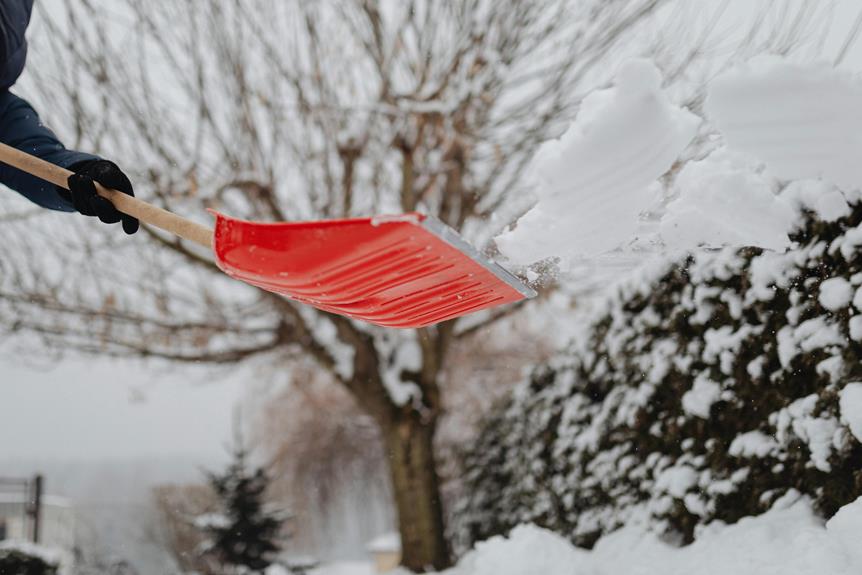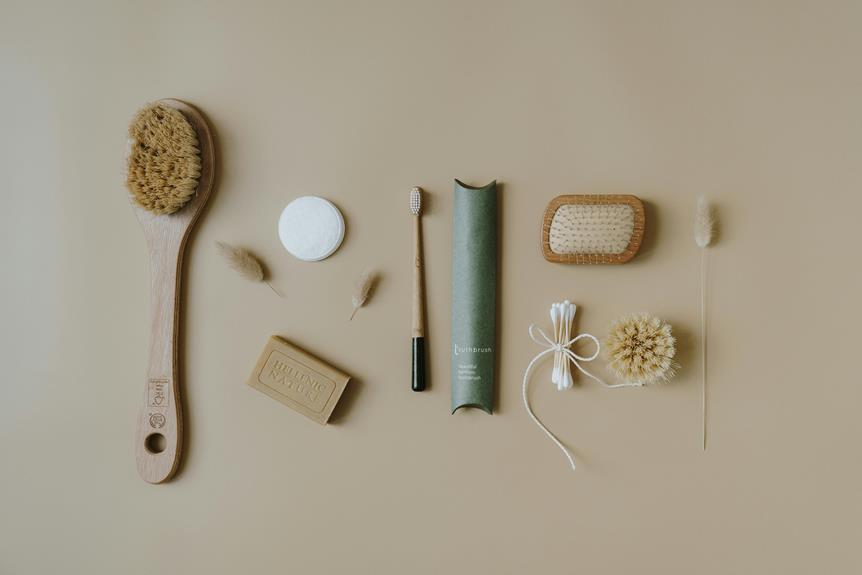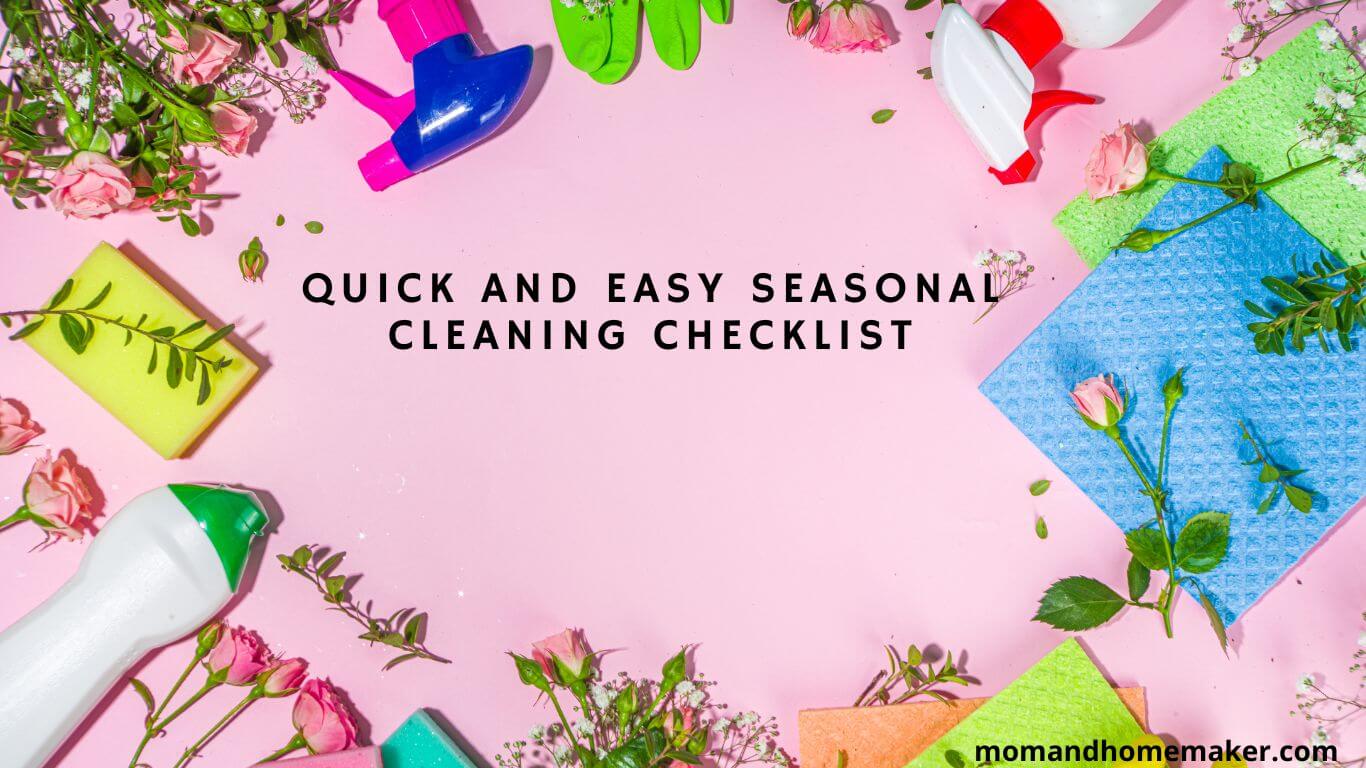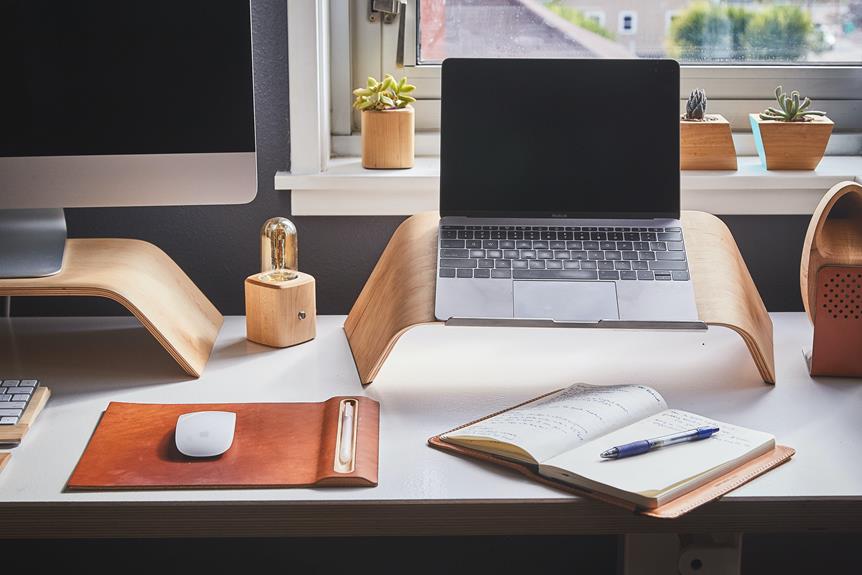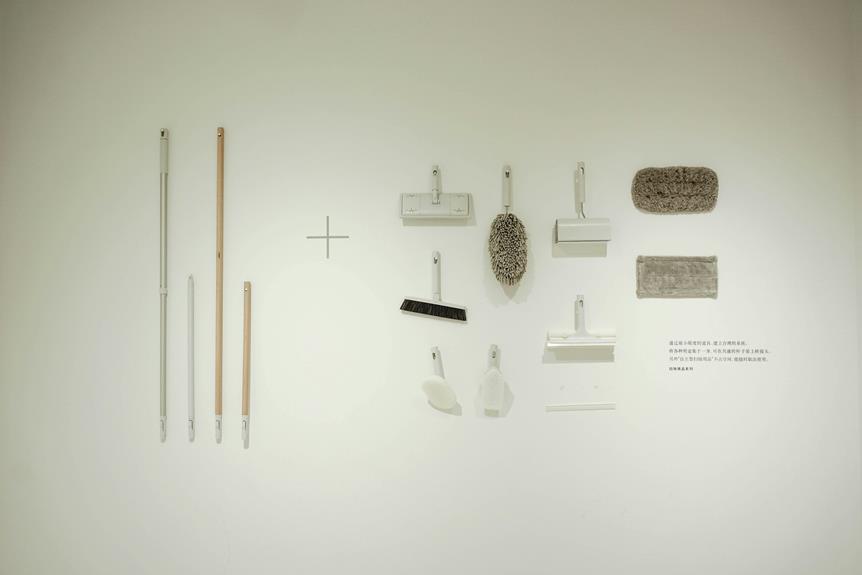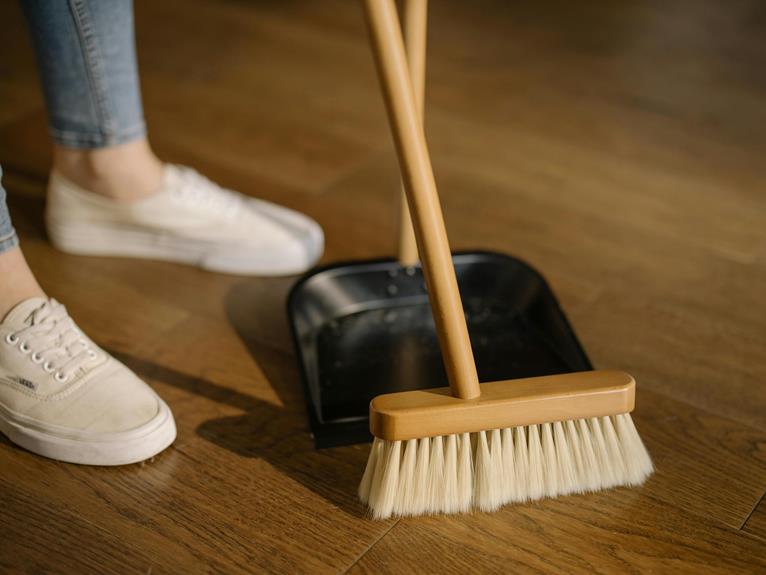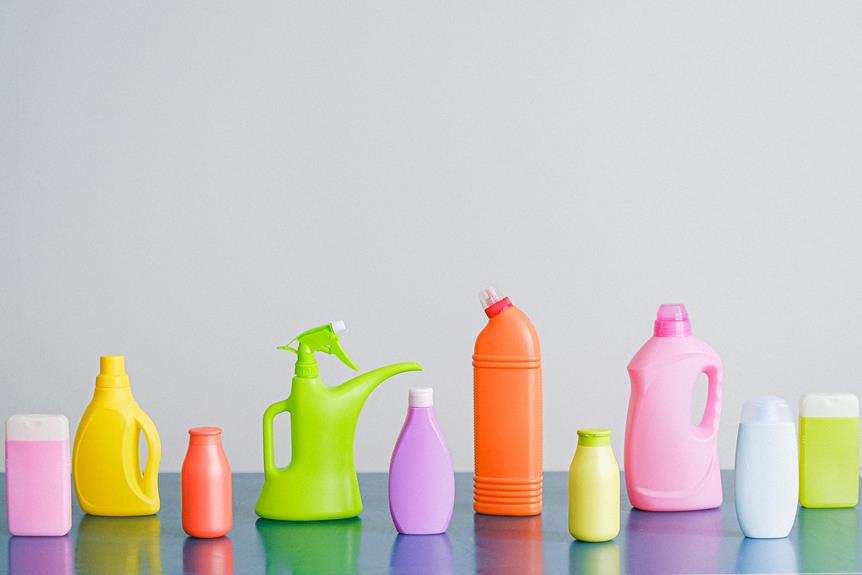As someone who suffers from allergies, I understand the importance of seasonal cleaning to relieve symptoms and create a healthier living space. Did you know that allergies affect over 50 million people in the United States alone, according to the American Academy of Allergy, Asthma & Immunology? With such a large number of people affected, it’s clear that taking proactive steps to reduce allergens in our homes is crucial.
It’s important to choose cleaning products that are hypoallergenic and fragrance-free. Avoiding harsh chemicals and opting for natural alternatives can help reduce respiratory irritation. Together, let’s take control of our allergies and enjoy cleaner, allergen-free homes.
Understanding Seasonal Allergies
Seasonal allergies can be challenging to understand, but with the right knowledge and preparation, managing them becomes much easier. Dealing with seasonal allergies for years, I know how frustrating it can be to constantly battle the symptoms that come with the changing seasons.
Symptoms can range from mild to severe, including sneezing, itchy and watery eyes, runny nose, nasal congestion, and fatigue. These symptoms greatly impact our daily lives, making it difficult to focus or enjoy outdoor activities.
To effectively manage seasonal allergies, it’s important to understand the common triggers that can cause these symptoms. Pollen from trees, grasses, and weeds is a major trigger. When these plants release pollen into the air, it can easily be inhaled and cause an allergic reaction.
Other triggers include mold spores, which can be found outdoors as well as indoors in damp areas like basements and bathrooms. Dust mites, pet dander, and certain foods can also contribute to seasonal allergy symptoms.
Knowing the common triggers for seasonal allergies allows us to take steps to minimize our exposure and reduce symptoms.
This may involve staying indoors on high pollen days, keeping windows closed, using air purifiers, and regularly cleaning and dusting our homes. It’s also important to stay informed about pollen forecasts and take appropriate actions to protect ourselves.
Understanding seasonal allergies and their triggers is the first step toward effective management. With this knowledge, we can take control of our allergy symptoms and enjoy the changing seasons without constant discomfort.
Identifying Common Allergens in Your Home
Managing allergies in your home is crucial for allergy sufferers like me. To do this, it’s important to identify common allergens that may be present. Here are some common allergens you should be aware of:
- Dust mites: These tiny creatures thrive in warm and humid environments like bedding, carpets, and upholstery. To minimize their presence, regularly wash bedding in hot water and use dust-mite-proof covers.
- Pet dander: Even if you don’t have a pet, pet dander can still be found in your home. It can stick to clothing and be brought in from outside. Vacuuming regularly and keeping pets out of bedrooms can help reduce exposure.
- Mold: Moisture-prone areas like bathrooms and basements are breeding grounds for mold. Cleaning and drying these areas regularly can prevent mold growth.
- Pollen: Outdoor allergens can find their way indoors through open windows and on clothing. Using air purifiers and keeping windows closed during peak pollen times can help minimize exposure.
- Common food allergens: Some allergens, like peanuts, tree nuts, dairy, and shellfish, can cause allergic reactions when ingested. Reading food labels carefully and being cautious when dining out can help prevent allergic reactions.
Preparing Your Cleaning Supplies
When getting ready to clean, it’s important to gather all the supplies you’ll need beforehand. This helps ensure an efficient and thorough cleaning process. By organizing your cleaning supplies, you can save time and energy, making the task more enjoyable and effective.
To keep track of what you need, create a checklist of the cleaning products required. Here’s an example of how I organize my cleaning supplies:
- All-purpose cleaner
- Glass cleaner
- Disinfecting wipes
- Baking soda
- Vinegar
- Dusting spray
In addition to the cleaning products, you’ll also need the right tools and equipment:
- Microfiber cloths
- Scrub brushes
- Rubber gloves
- Vacuum cleaner
- Mop and bucket
- Spray bottles
To keep everything in one place, I recommend using a caddy or cleaning tote. This way, you can easily carry your supplies from room to room without constantly going back and forth.
Remember to check the expiration dates on your cleaning products. Using expired products may not be as effective and could even be harmful. If you find any expired products, dispose of them properly and replace them with fresh ones.
Cleaning Strategies for Dust Mites
Regularly vacuuming and dusting surfaces is an effective way to reduce dust mites in your home. Dust mites are tiny creatures that thrive in warm and humid environments and can trigger allergies and asthma symptoms.
To tackle these pesky critters, here are some deep cleaning techniques and allergy-safe cleaning products that have worked wonders for me:
- Wash bedding and fabric items in hot water: Killing dust mites and removing allergens effectively is as simple as washing your bedding, curtains, and other fabric items in hot water (at least 130°F).
- Steam clean mattresses, carpets, and furniture: Instead of using harsh chemicals, use a steam cleaner on mattresses, carpets, and upholstered furniture. The high temperature of steam kills dust mites and eliminates allergens.
- Invest in dust mite-proof covers: Protect your mattresses and pillows by investing in dust mite-proof covers. These covers create a barrier that prevents dust mites from settling in and protects you from their allergens.
- Regularly clean air ducts and filters: Dust mites can accumulate in your HVAC system, spreading allergens throughout your home. Make sure to regularly clean air ducts, replace filters, and consider using high-efficiency particulate air (HEPA) filters to trap dust mites and their allergens.
- Choose allergy-safe cleaning products: Opt for cleaning products that are labeled as allergy-safe or hypoallergenic. These products are designed to be gentle on sensitive individuals while effectively cleaning surfaces and reducing allergens.
Eliminating Pet Dander From Your Home
Regularly grooming your pets and keeping their living areas clean is essential for getting rid of pet dander in your home. I understand the struggle of allergies, so creating a safe and comfortable space where you can truly belong is important.
To help you in your quest for a dander-free home, here are some practical tips:
- Brush your pet regularly: Regular brushing helps remove loose hair and dander from your pet’s coat. Use a brush designed to trap hair and dander, preventing it from spreading in your home.
- Give your pet a bath: Bathing your pet once a week can significantly reduce pet allergens in your home. Use a hypoallergenic shampoo that’s gentle on their skin and doesn’t strip away their natural oils.
- Clean their living areas: Regularly vacuum and wipe down surfaces in your pet’s living areas to eliminate pet hair and dander. Use a vacuum cleaner with a HEPA filter to effectively trap allergens, and use non-toxic cleaning products for a safe environment for both you and your pet.
Removing Pollen From Indoor Spaces
Now let’s focus on effectively removing pollen from indoor spaces to create an allergy-free environment. As allergy sufferers, we know how important it is to prevent outdoor allergens from entering our homes. Here are some natural cleaning alternatives that can help us keep pollen away:
- Regular dusting and vacuuming: Dust surfaces and vacuum carpets and upholstery regularly to remove any pollen particles that may have made their way indoors. Using a vacuum cleaner with a HEPA filter will trap even the smallest particles.
- Washing bedding frequently: Pollen can easily cling to our bedding, so it’s important to wash our sheets, pillowcases, and blankets regularly. This will help eliminate allergens and create a fresh sleeping environment.
- Using an air purifier: Invest in an air purifier with a HEPA filter to greatly reduce the amount of pollen circulating in our indoor spaces. Place the purifier in the rooms where we spend the most time to ensure maximum effectiveness.
- Keeping windows and doors closed: While it may be tempting to let in some fresh air, keeping windows and doors closed on high pollen days can prevent allergens from entering our living spaces.
- Creating a shoe-free zone: Establish a shoe-free zone near the entrance of our homes to prevent tracking pollen indoors. Encourage family members and guests to leave their shoes at the door to minimize pollen exposure.
Managing Mold and Mildew Allergies
To effectively manage mold and mildew allergies, it’s crucial to minimize moisture and keep your environment clean and dry. Mold and mildew thrive in damp conditions, so it’s important to take steps to prevent their growth and keep allergens at bay.
The first step in managing mold and mildew allergies is to control moisture levels in your home. Use dehumidifiers, especially in areas prone to dampness like basements and bathrooms. Regularly check for and repair any leaks or water damage.
Regular cleaning is also essential in managing mold and mildew allergies. Vacuum carpets and upholstery and dust surfaces to remove allergens from your living space. It’s important to regularly clean areas that are prone to mold and mildew, such as bathrooms and kitchens. Using mold and mildew-resistant products can further prevent their growth.
In addition to minimizing moisture and maintaining a clean environment, it’s important to monitor and manage hay fever symptoms. You can use over-the-counter antihistamines or nasal sprays to alleviate symptoms like sneezing, itching, and congestion. If symptoms persist or worsen, it’s advisable to consult with a healthcare professional for further guidance.
Deep Cleaning Carpets and Upholstery
Managing mold and mildew allergies requires controlling moisture levels and regular cleaning. To minimize allergen exposure, it’s important to deep clean carpets and upholstery. Here are some tips to get started:
- Vacuum regularly: Use a vacuum cleaner with a HEPA filter to effectively remove allergens from carpets and upholstery. Vacuuming at least once a week can significantly reduce allergens.
- Steam clean: Consider using a steam cleaner to deep clean your carpets and upholstery. The high temperature of the steam helps kill dust mites and remove allergens. Follow the manufacturer’s instructions and allow enough time for surfaces to dry completely.
- Spot clean stains: Treat stains promptly to prevent mold and mildew growth. Use a gentle cleaning solution and blot the stain instead of rubbing it to avoid spreading it further.
- Hire professional cleaning services: For a thorough deep clean, consider hiring professionals. They have the expertise, equipment, and knowledge to tackle tough allergen problems.
- Use allergen-reducing products: Look for cleaners designed to reduce allergens. These products can neutralize allergens and provide long-lasting relief for allergy sufferers.
Maintaining a Dust-Free Bedroom
Keeping my bedroom dust-free is crucial for my well-being, especially because of my allergies. Dust can cause sneezing, coughing, and overall discomfort, so I’ve developed effective strategies to prevent dust buildup.
I make it a habit to dust all surfaces in my bedroom at least once a week. This includes furniture, shelves, and even the top of my ceiling fan. I use a microfiber cloth to capture and trap the dust, ensuring that it doesn’t spread around the room.
To protect against dust mites, I invest in hypoallergenic pillowcases and mattress covers. These covers create a barrier that prevents dust mites from settling in my bedding and making my allergies worse.
Regular vacuuming is another important step in maintaining a dust-free bedroom. I vacuum the floors, rugs, and even the curtains to remove any dust or allergens that may have settled. Using a vacuum cleaner with a HEPA filter is particularly beneficial as it can trap smaller particles and improve the overall air quality in the room.
Lastly, I try to keep my bedroom as clutter-free as possible. Clutter tends to attract dust and makes it more difficult to clean effectively. By keeping surfaces clear and minimizing the number of decorative items, I can reduce the potential for dust accumulation.
Creating an Allergy-Friendly Cleaning Routine
To create a hypoallergenic home, it’s important to incorporate natural cleaning solutions into your routine. By using gentle and effective methods, you can reduce allergens without compromising your health or the environment. Here are five key steps to help you create an allergy-friendly cleaning routine:
- Use vinegar and water: Mix equal parts of vinegar and water to create a natural cleaning solution. This mixture can be used to clean surfaces, floors, and windows, effectively removing allergens without harsh chemicals.
- Dust with a microfiber cloth: Microfiber cloths trap dust particles instead of spreading them around. Use a damp microfiber cloth to dust surfaces, including furniture, shelves, and blinds, minimizing the release of allergens into the air.
- Vacuum regularly: Invest in a vacuum cleaner with a HEPA filter, which effectively traps and contains allergens like dust mites and pet dander. Vacuum your carpets, rugs, and upholstery regularly to keep allergen levels low.
- Wash bedding in hot water: Bedding can harbor allergens like dust mites. To eliminate them, wash your sheets, pillowcases, and blankets in hot water every week. This kills any allergens and keeps your sleeping environment clean.
- Keep windows closed: During allergy season, keep your windows closed to prevent pollen and other outdoor allergens from entering your home. Use an air purifier with a HEPA filter to further improve indoor air quality.
Cleaning Air Filters and Ventilation Systems
Regularly cleaning air filters and ventilation systems is crucial for maintaining clean and allergen-free indoor air. As someone who suffers from allergies, I understand the importance of having a clean and healthy environment to live in.
Cleaning air vents and improving indoor air quality can significantly reduce allergens and create a space where we can feel comfortable and at ease.
To clean air filters, it’s important to follow the manufacturer’s instructions. Simply remove the filter and either vacuum or rinse it to remove any dust and debris that has built up. By regularly doing this, we can ensure that the filter is working at its best and effectively capturing allergens like pollen, dust mites, and pet dander.
In addition to cleaning air filters, it’s also crucial to pay attention to our ventilation systems. Over time, air vents can gather dust and allergens, which can then circulate throughout our homes. To prevent this, it’s recommended to clean air vents regularly.
Simply remove the vent covers and use a vacuum or damp cloth to remove any dust or debris. By keeping our air vents clean, we can improve the overall indoor air quality and reduce the likelihood of experiencing allergy symptoms.
Organizing and Decluttering to Reduce Allergens
Creating a clean and allergen-free environment requires effective organization and decluttering. By reducing clutter and implementing practical organizing tips, we can significantly decrease allergens in our homes, leading to improved overall well-being.
To get started, begin by sorting through your belongings and prioritizing what you truly need. Discard or donate items that are no longer necessary, as this won’t only free up space but also minimize the accumulation of dust and allergens.
Assign specific storage areas for different items to ensure everything has a designated place. This will help maintain a clutter-free environment and make cleaning easier.
Invest in storage solutions such as bins, baskets, and shelves to keep your belongings organized. These solutions can prevent the accumulation of dust and make cleaning more efficient.
Implementing a regular cleaning routine is essential. Set aside time each week to declutter and clean your living space. This proactive approach will prevent clutter from building up and reduce the presence of allergens.
Consider adopting a minimalist lifestyle. Embrace the concept of owning fewer possessions, as this can reduce clutter and create a more peaceful and allergy-friendly living environment.
Creating a Seasonal Cleaning Schedule
Establishing a seasonal cleaning schedule can help ensure that your home stays clean and allergen-free throughout the year. By creating a cleaning checklist and routine, you can stay organized and on top of your cleaning tasks. Breaking down the tasks into manageable chunks allows you to tackle one area at a time, preventing overwhelm.
To get started, here’s a simple cleaning schedule that you can customize to fit your needs. This schedule includes tasks that should be done on a seasonal basis:
Spring – Deep clean carpets and rugs
- Dust and clean ceiling fans
- Wash curtains and blinds
- Clean windows and window sills
- Organize and declutter closets |
Summer – Clean air conditioning filters
- Dust and clean light fixtures
- Clean outdoor furniture
- Clean the grill
- Clean the patio or deck |
Fall – Clean and store summer items
- Clean and organize the garage
- Clean gutters and downspouts
- Dust and clean baseboards
- Clean and organize the pantry |
Winter – Clean and rotate mattresses
- Clean and organize kitchen cabinets
- Dust and clean radiators
- Clean and organize holiday decorations
- Clean and disinfect doorknobs and light switches |
Conclusion
Seasonal cleaning is a great way to reduce allergies and create a healthier home. By identifying common allergens and preparing cleaning supplies, allergy sufferers can effectively minimize exposure to dust mites and pet dander.
It’s important to establish an allergy-friendly cleaning routine and regularly clean air filters and ventilation systems. Organizing and decluttering your living space will also help to reduce allergens.

